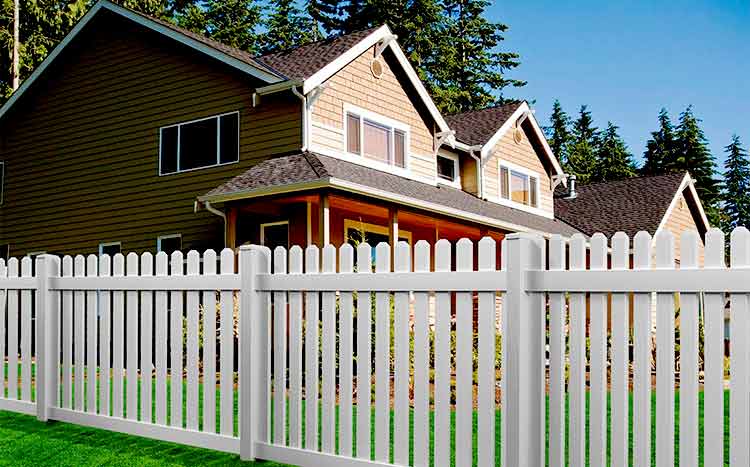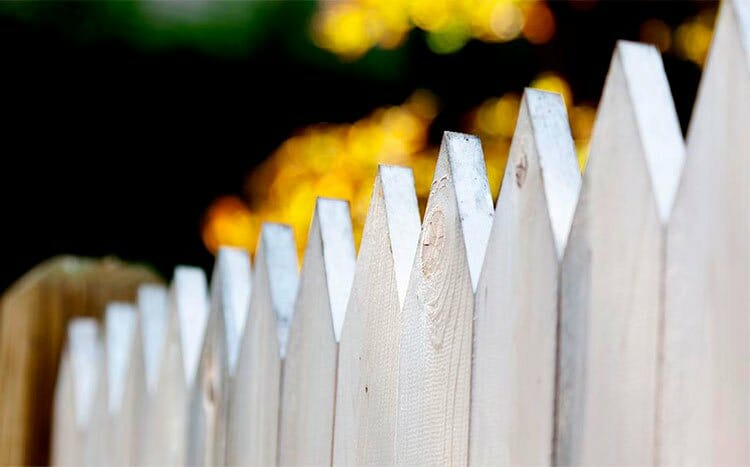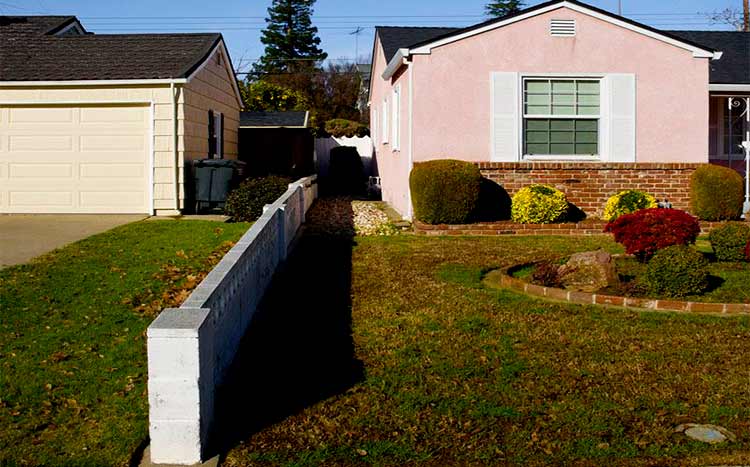The adage, ‘Good fences make good neighbors,’ has, for years, been the key to maintaining peaceful relations between neighbors. But once in a while, disputes always find a way to arise, particularly where fences and boundaries are involved.
To ensure that these conflicts don’t erupt into severe court battles, neighbors can rely on the Wisconsin fence laws to find common ground.

Do I need a permit to build a fence in Wisconsin?
It depends on your local county and Homeowners Association ordinances. Generally, you won’t need a building permit in most municipalities, although you’ll still have to observe their height and placement restrictions.
Nonetheless, city ordinances in Marinette, Green Bay, Kenosha, and several others still demand that you obtain a fence permit before commencing construction.
If your property is in a floodplain, you’ll also need a floodplain permit, even where building permits are not needed.
Overall, different townships have different requirements when it comes to fence permits. To be safe, consult your building planning department.
Can I replace an existing fence without a permit?
The regulations on this vary. Some city limits and county laws allow you to replace an existing fence without a permit
if you don’t change its height, location, and material.
Other regulations require that you obtain a permit for every fence replacement, even if it’s with a similar fence.
You, therefore, should contact the local building inspectors to verify their permitting requirements in your area.
How tall can a privacy fence be in Wisconsin?
All fences in the residential neighborhoods are not expected to exceed 6 feet in height. The front yard has a maximum height restriction of 3 feet while the rear and side lots, are 6 feet.
Front yard and corner lot fences can be increased to 4 feet in height if it’s an open design (less than 50% opaque).
In non-residential districts, the fence heights are capped at 8 feet in height, but this might slightly differ depending on the area’s zoning restrictions.
Who owns the fence on property lines in WI?
Although the Wisconsin fence laws mainly focus on neighbors involved in agriculture and grazing, Wis. Stat. § 90.03. states that each adjoining neighbor is responsible for an equal share of the fence for as long as they occupy that land.
This means that even if only one neighbor uses their land for grazing and agricultural purposes, both neighbors have to share the repair and maintenance costs.
Furthermore, the adjoining property owners must maintain that fence in good repair throughout the year.
The neighbors can use the Right-Hand rule, as stated in Wis. Stat. § 90.07(3) to determine which portion of the fence is theirs.
How do you know where the property boundary is?
The best way to locate your property lines is through a survey. A surveyor will measure the property, map it appropriately, and mark the boundary with survey pins or stakes.
If you have your past survey records (usually a plat), you don’t need to hire a surveyor. Just check the map for the exact boundaries of your home. If you don’t have this map, you may find one at the local recorder’s office or website.
Some deeds may also have data on the boundaries, even though that data isn’t always foolproof. As a last resort, you can check details of your neighbors’ property lines to deduce your boundaries.
Can my neighbor build a fence on the property line?
Yes. Under Wis. Stat. § 90.03. an adjoining property owner can construct a fence on the property line, but its responsibility will be up to your agreement.
If you agree that the constructing neighbor will be the sole owner, that agreement should be signed and recorded at the local clerk’s office. There should also be two witnesses (Wis. Stat. § 90.05. (1)).
Under this law, you can also agree to use markers instead of constructing a fence.
However, if neither property owner uses their land for grazing or agriculture, you won’t be obligated to erect or contribute towards this fence.
Can I put up a fence on my side of the property line?
Yes. If you don’t want a partition fence, you’re allowed to build a privacy fence on your side of the property line. The fence, however, has to maintain the setback regulations set in your area and adhere to the HOA ordinances.
Most city codes state that a fence should be at least 18 inches from the property line – but this differs in every city. You should therefore confirm these rules at the local clerk’s office.
The height regulations in the area will also apply to such a fence.

What is a spite fence?
A spite fence refers to any structure constructed as a fence between adjoining properties for no legitimate purpose but to annoy, harm, or interfere with a neighbor’s enjoyment of their property.
The Wisconsin fence laws, under WI Stat § 844.10, explicitly prohibit the construction of such a fence and deem them a private nuisance.
While this law talks of fences over 6 feet, it doesn’t preclude any fences less than this height. This was the case in Schultz v. Trascher, 2002, which found the fence a private nuisance.
Resolving a fence dispute
When conflict arises between neighbors concerning a partition fence, the first step should always be negotiation and mediation.
If talking with the neighbor doesn’t work, the law under Wis. Stat. § 90.01. allows one neighbor to contact fence viewers. In this case, fence viewers are the town or district supervisors.
The fence viewers will assess the fence and determine the amounts to be paid by each party. However, the viewers aren’t allowed to resolve boundary disputes.
Wisconsin boundary fence laws at a glance
This table provides an overview of some of the state laws governing Wisconsin’s fence laws and links to their original documents.
| Statues | Partition Fences | Relocation of the Fence |
|---|---|---|
| Partition Fence Statute: Wis. Stat. Ann. 90.03 Relocation of Fence: Wis. Stat. Ann. 90.06 | The occupants of adjoining lands must keep and maintain fences in equal shares; The occupants may agree to use markers instead of fences; The occupants must maintain repairs unless the occupants mutually agree. | When the owner/occupant builds a fence before a boundary line has been located between that land and adjoining land and the location of the boundary line establishes that the fence is located on the adjoining land, the person who built the fence is the owner; The owner of the fence must relocate the fence within 30 days after the service of the written notice of the location of the fence to the fence owner by the owner/occupant of the adjoining land where the fence is located. |
Keep in mind; These laws are bound to change with time depending on the new legislation, federal court decisions, and other initiatives. Use the information provided above as a guide and research the latest regulations in your municipality.
FAQ’s
Who owns the fence between neighbors?
Adjoining owners of the property are considered joint owners of the fence unless they’ve agreed otherwise. This law, however, only applies if one or both property owners are using their property for grazing or agricultural purposes.
What if a new fence is blocking my view?
A fence blocking your view can be considered as a private nuisance under the Wisconsin fence laws. Nonetheless, you’ll have to prove that it was maliciously constructed for that purpose only to be able to take civil action against it.
Can my neighbor hang things on my fence?
No. The law requires that the neighbor should first request your permission before using your fence in any way. Such an action allows you to take legal action against that neighbor.
Can I paint my side of the fence?
The simple answer is no. If the fence belongs to your neighbor, your first step should be seeking the permission of your neighbor. If they agree, you can then paint the fence in accordance with the HOA fence appearance regulations in your area.
Can I build a fence next to my neighbor’s fence?
Yes. Property owners who know the position of their property lines are allowed to build a fence next to the neighbor’s fence. A good rule of thumb is to ensure the fence is about 18 inches from the property line.
What can you do if your neighbor encroaches on your property?
Your first step should be notifying them of the encroachment and ask them to move their structures. If that doesn’t work, hire a surveyor to mark out the property lines between your properties.
If he/she still doesn’t stop using your land, you can take the legal route and file a lawsuit in court. If your claim is valid, the court will order the neighbor to stop the encroachment and move their structures.
Can I put a fence up without my neighbor’s permission?
It depends on the location of the fence. If the fence is on the property lines, you’ll need their permission. This is because they might also be compelled to contribute to the construction of such a fence.
Can I make my neighbor repair his fence?
Yes. If your neighbor neglects his fence, which is in poor condition, simply asking them to repair that fence might be enough.
However, if they refuse to repair, you can help them with the repairs or even opt to construct your fence next to theirs to hide the eyesore. For the sake of maintaining a peaceful relationship with them, do your best to avoid taking the matter to court.













